It looks like you're using an Ad Blocker.
Please white-list or disable AboveTopSecret.com in your ad-blocking tool.
Thank you.
Some features of ATS will be disabled while you continue to use an ad-blocker.
share:
The theorized mechanism of evolution involves a piece-by-piece change to organisms at the genetic level. These sequential alterations are then figured
to be the cause of the diversity of life we see today. Darwin himself, when formulating his theory, admitted that:
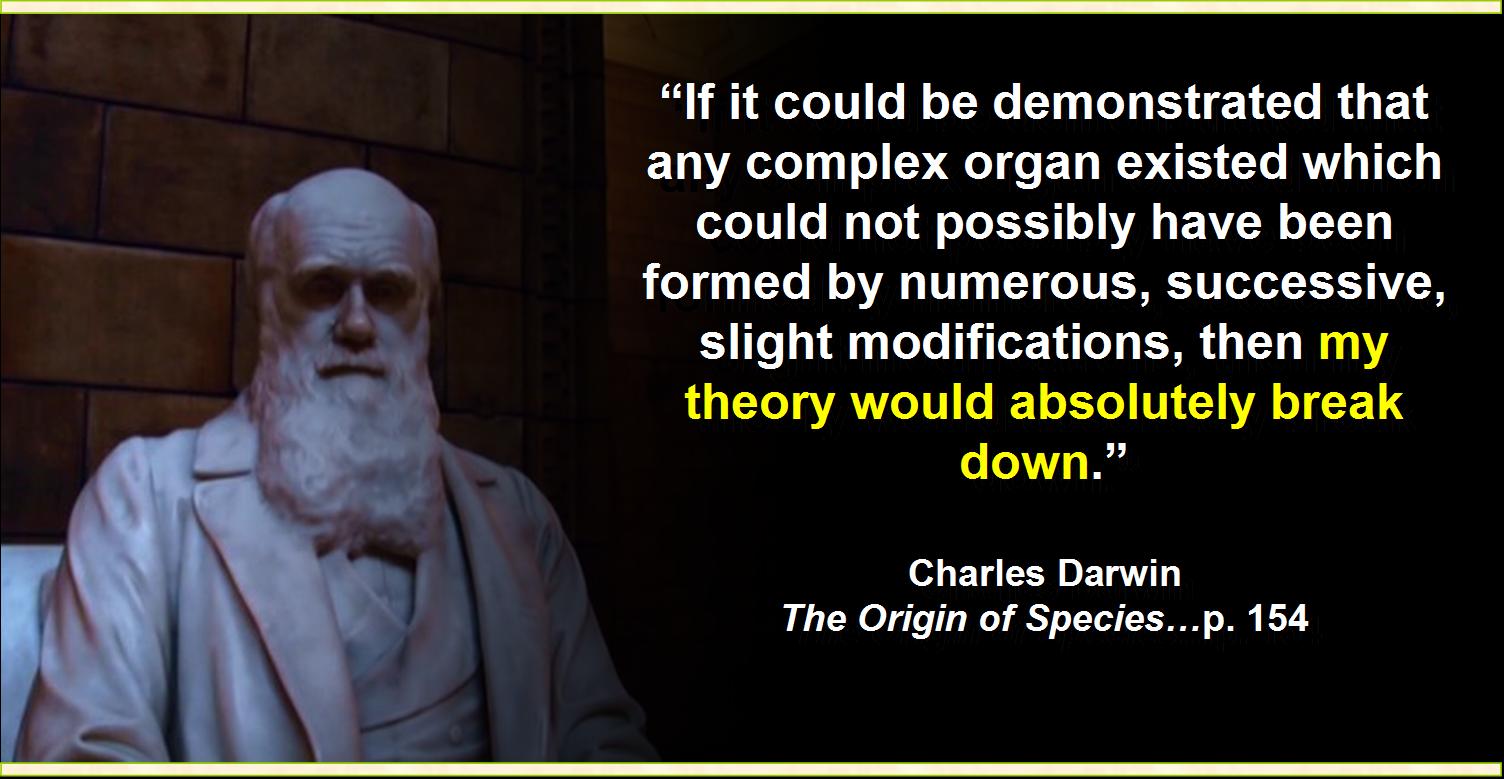
Darwin wrote this before significant advances in microbiology and histology (study of component parts of organs) had occurred. There was no reason to believe, at the time, that organisms had any components that were dependent on other components of the body to function. But, over the years, we discovered that all organisms have organs, tissues, cells, proteins, and molecules that are all dependent on each other for proper functioning.
For example, a heart is useless without lungs, and lungs are useless without a heart. The acid-resistant lining of your stomach is irrelevant without the production of stomach acid, stomach acid is deadly without the acid-resistant stomach lining. A receptor is lame without a ligand, and a ligand is erroneous without a receptor to receive its signal. These processes require all parts of the system to be in place for it to work. Because evolution relies on piece-by-piece, sequential transformations, this could not have possibly created these complex systems that require all pieces to be set.
All aspects of your anatomy demonstrate the impossibility of evolution.
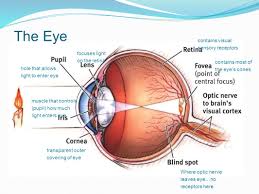
The Eye - you need a lens to focus on images, but this is non-functional without tiny muscles to adjust the convexity of the lens. These tiny muscles each need an intricate neural network that is connected to your brain to allow a seamless unconscious adjustment of your lens. ocular muscles are mostly controlled by the oculomotor nerve
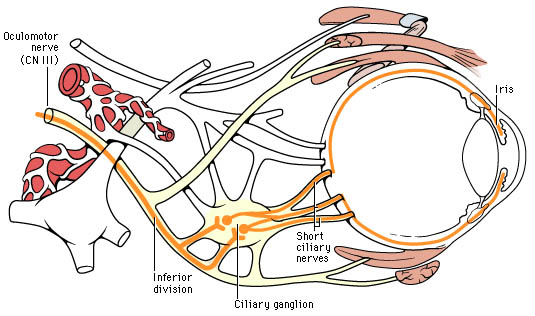
This complex nerve connected from the nervous system to each individual ocular muscle is clearly impossible for random chance to create. But there's more. Once past the lens there needs to be a network of cells that are capable of receiving the light. This requires a whole retinue of proteins and molecules, such as rhodopsin, which has a meticulous shape to allow it to have a high sensitivity to light
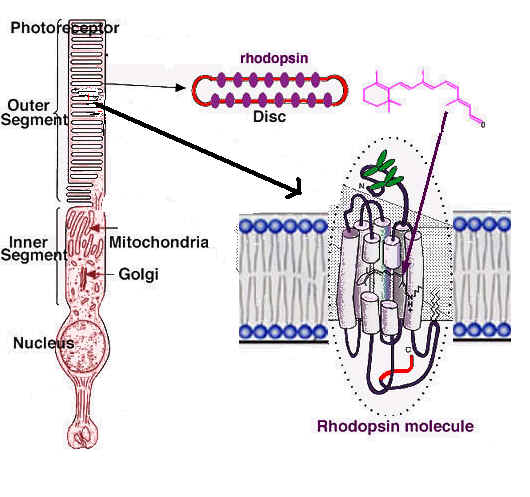
Not only that, rhodopsin then causes an adjustment in the overall sensitivity of your retina to help you adjust to varying light levels. This message is sent through the optic nerve, which in itself is another complex bundle of nerves that would humble the world's greatest electrician, and is then received in the visual cortex. This process is responsible for your ability to change from day vision to night vision - pretty convenient, especially for the pre-light-bulb era.
Ever wonder why you can't stare at a light source, but it is ok in your periphery? This is because there is a dense concentration of cone cells in the center point of your eye called the fovea. These cells are extremely sensitive and they allow you to perceive and focus on intricate details that are in the focal point of your eye. The photopigments in your periphery are mostly rod cells, which are less sensitive to light. These peripheral cells in the retina are linked to your cerebral cortex to allow you to acknowledge events that you are not necessarily focused on, allowing you a complete view of what's in front of you.
The raw image received by the retina is a cluster of blobs until it gets processed into a perceivable image in the first visual cortex (V1)

and then further processing through the cortical areas until you can make sense of the image you are seeing. This is, of course, happening so fast that you are essentially always present and integrated with the moment. This has been perpetuating ceaselessly for your entire life.
But we are still not done with the eye. The eye also needs to have some sort of lubricating substance so it does not dry out due to its exposure to the outside world. So eyelids capable of opening and closing are necessary, which also so happen to have the perfect anti-biotic and lubricating formula to ensure that your eye is moisturized and bacteria-free. As an added convenience, this process is controlled subconsciously, but can also be conscious if you wish to close your eyes to what's right in front of you. Such as the fact that you are not the meaningless ancestor of a mutant monkey. You are in control of the greatest organic machine imaginable and it is no accident.
Your eyelids are also connected to an intricate neural feedback system that is capable of detecting incoming objects that may cause harm to the eye - this is called the corneal reflex. This reflex involves the detection of the incoming object, and then a subsequent motor response to close the eyelid, and it occurs in a swift 0.1 seconds, helping you prevent any object from touching your eye. As some nice accessories you have eyelashes and eyebrows to prevent sweat from irritating your eye during intense exercise.
It is worth mentioning how beautiful all of this is.

Evolution therefore runs into the problem of the chicken and the egg, over and over and over again. Both the chicken and the egg are required for the population to exist. Because evolution works piece-by-piece, it could not have created complex systems that are dependent on other complex systems to function. Although I primarily focused on the eye, this same logic is applicable to every organ in the body and if people are interested enough I could elaborate on many, many more examples.
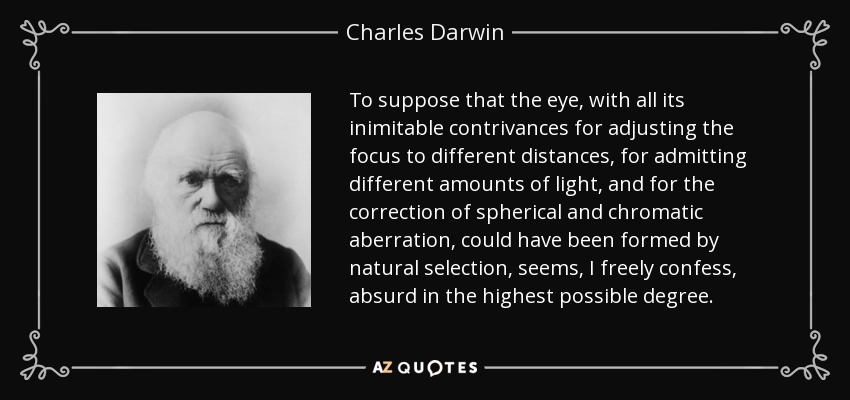

Darwin wrote this before significant advances in microbiology and histology (study of component parts of organs) had occurred. There was no reason to believe, at the time, that organisms had any components that were dependent on other components of the body to function. But, over the years, we discovered that all organisms have organs, tissues, cells, proteins, and molecules that are all dependent on each other for proper functioning.
For example, a heart is useless without lungs, and lungs are useless without a heart. The acid-resistant lining of your stomach is irrelevant without the production of stomach acid, stomach acid is deadly without the acid-resistant stomach lining. A receptor is lame without a ligand, and a ligand is erroneous without a receptor to receive its signal. These processes require all parts of the system to be in place for it to work. Because evolution relies on piece-by-piece, sequential transformations, this could not have possibly created these complex systems that require all pieces to be set.
All aspects of your anatomy demonstrate the impossibility of evolution.

The Eye - you need a lens to focus on images, but this is non-functional without tiny muscles to adjust the convexity of the lens. These tiny muscles each need an intricate neural network that is connected to your brain to allow a seamless unconscious adjustment of your lens. ocular muscles are mostly controlled by the oculomotor nerve

This complex nerve connected from the nervous system to each individual ocular muscle is clearly impossible for random chance to create. But there's more. Once past the lens there needs to be a network of cells that are capable of receiving the light. This requires a whole retinue of proteins and molecules, such as rhodopsin, which has a meticulous shape to allow it to have a high sensitivity to light

Not only that, rhodopsin then causes an adjustment in the overall sensitivity of your retina to help you adjust to varying light levels. This message is sent through the optic nerve, which in itself is another complex bundle of nerves that would humble the world's greatest electrician, and is then received in the visual cortex. This process is responsible for your ability to change from day vision to night vision - pretty convenient, especially for the pre-light-bulb era.
Ever wonder why you can't stare at a light source, but it is ok in your periphery? This is because there is a dense concentration of cone cells in the center point of your eye called the fovea. These cells are extremely sensitive and they allow you to perceive and focus on intricate details that are in the focal point of your eye. The photopigments in your periphery are mostly rod cells, which are less sensitive to light. These peripheral cells in the retina are linked to your cerebral cortex to allow you to acknowledge events that you are not necessarily focused on, allowing you a complete view of what's in front of you.
The raw image received by the retina is a cluster of blobs until it gets processed into a perceivable image in the first visual cortex (V1)

and then further processing through the cortical areas until you can make sense of the image you are seeing. This is, of course, happening so fast that you are essentially always present and integrated with the moment. This has been perpetuating ceaselessly for your entire life.
But we are still not done with the eye. The eye also needs to have some sort of lubricating substance so it does not dry out due to its exposure to the outside world. So eyelids capable of opening and closing are necessary, which also so happen to have the perfect anti-biotic and lubricating formula to ensure that your eye is moisturized and bacteria-free. As an added convenience, this process is controlled subconsciously, but can also be conscious if you wish to close your eyes to what's right in front of you. Such as the fact that you are not the meaningless ancestor of a mutant monkey. You are in control of the greatest organic machine imaginable and it is no accident.
Your eyelids are also connected to an intricate neural feedback system that is capable of detecting incoming objects that may cause harm to the eye - this is called the corneal reflex. This reflex involves the detection of the incoming object, and then a subsequent motor response to close the eyelid, and it occurs in a swift 0.1 seconds, helping you prevent any object from touching your eye. As some nice accessories you have eyelashes and eyebrows to prevent sweat from irritating your eye during intense exercise.
It is worth mentioning how beautiful all of this is.

Evolution therefore runs into the problem of the chicken and the egg, over and over and over again. Both the chicken and the egg are required for the population to exist. Because evolution works piece-by-piece, it could not have created complex systems that are dependent on other complex systems to function. Although I primarily focused on the eye, this same logic is applicable to every organ in the body and if people are interested enough I could elaborate on many, many more examples.

edit on 4-9-2018 by cooperton because: (no reason given)
Interesting, but given the idea that the theory of evolution proposes that all things started out simple and then evolved through small changes into
more complex lifeforms, it is possible that given enough time small changes will become the highly complex organs you speak of.
Like the human eye example you present. Although true that the human eye is an incredible organ, if evolution theory is correct, it developed though small changes from simpler sensory organs. An example of a simple light sensory organ is the eye spot of the common Planaria flat worm.
Consider how small changes to the flat worm's eyespot could produce a more complex organ over time allowing that said changes were beneficial to survival and reproduction. Perhaps a skin over the eyespot forms into a lens, then muscles develop to focus the lens, etc.
Basically I can believe that evolution itself is a means to an end, destined to create complexity over time and many generations of a species. It seems more reasonable to make that assumption than believe such complexity simply appeared overnight or in a single generation.
Like the human eye example you present. Although true that the human eye is an incredible organ, if evolution theory is correct, it developed though small changes from simpler sensory organs. An example of a simple light sensory organ is the eye spot of the common Planaria flat worm.
Flatworms have prominent eyespots. These constitute the flatworm's most prominent sensory organs. However, while the eyespots resemble eyes, the organs are much more simple. Eyespots consist of a single layer of photosensitive cells. The photosensitive cells contain a pigment that reacts to light, and signal nerve cells when they do so. The eyespots have no lenses to focus images. Due to their simplicity, eye spots cannot produce images. Instead, the eyespots can only tell light from dark.
Consider how small changes to the flat worm's eyespot could produce a more complex organ over time allowing that said changes were beneficial to survival and reproduction. Perhaps a skin over the eyespot forms into a lens, then muscles develop to focus the lens, etc.
Basically I can believe that evolution itself is a means to an end, destined to create complexity over time and many generations of a species. It seems more reasonable to make that assumption than believe such complexity simply appeared overnight or in a single generation.
The biggest problem is people tend to look from the present to the past and say that is impossible that everything aligned up so well to be random, so
it must be intelligent design with this one specific branch. But, when you look from the past forward you see endless branches going off in endless
directions that most end to nowhere and a few continue forward to form what life we see today.
originally posted by: wtfatta
a reply to: cooperton
An interesting thread.
What are your thoughts on this?
All chemicals have some degree of photoreceptivity, so to be able to detect light is no issue. It is a matter of translating that into a coherent helpful stimulus. Therefore, Even the most rudimentary reaction to light presents the same difficulty of chicken or the egg.
Here is one of the most rudimentary known effective mechanisms for phototaxis (movement stimulated by light):
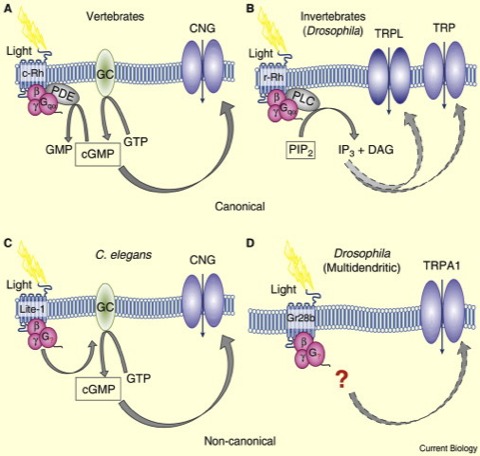
Notice that even this simple mechanism involves many proteins to function whether it be a bacteria or a vertebrate. These are not simple proteins either. Each simplified representation in the picture above is actually its own protein complex:
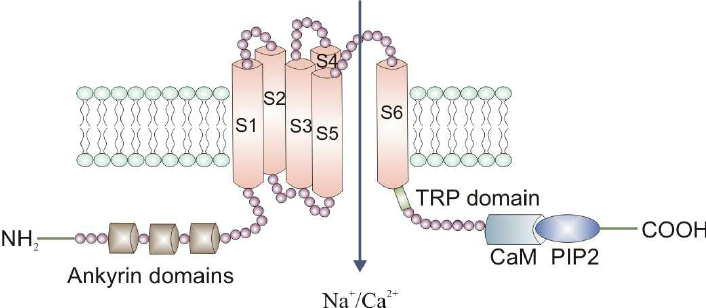
How even one of these proteins could come to be by random mutation is totally unfathomable. Not to mention how these proteins could have possibly synchronized in a manner that allowed an effective response to light. And even this example is taking for granted the existence of a cellular membrane, dna replication, protein transcription and translation, homeostatic mechanisms, metabolism, etc, which all had to be in place to even consider the possibility of phototaxis.
This is only addressing the molecular dilemma, there exists even more complications as you go to the histological/tissue level, and also the organization of all these factors.
edit on 4-9-2018 by cooperton because: (no reason given)
The simplest organisms are jellyfish. They have a ring of photo-receptors which are directly tied into a simple neural network that control muscle
contractions. There isn't any brain. But that is enough to allow the jellyfish to avoid direct sunlight and seek shade.
Next level up, you have insects with compound eyes. These work on "optic flow" which is a way of determining velocity, rotation and motion from adjacent photo-receptors. Enough to determine distance, rotation and motion. Bees can do shape recognition for flowers.
The first mammals were small marsupial mice. These evolved into everything from large cats to elephants, apes and humans.
Next level up, you have insects with compound eyes. These work on "optic flow" which is a way of determining velocity, rotation and motion from adjacent photo-receptors. Enough to determine distance, rotation and motion. Bees can do shape recognition for flowers.
The first mammals were small marsupial mice. These evolved into everything from large cats to elephants, apes and humans.
originally posted by: JameSimon
a reply to: cooperton
So you say that evolution is impossible based on your lack of understanding of evolutionary processes. Awesome, glad we clarified that.
Actually , the Laws of Probability and Statistics state it would be a near impossibility . One would have to take the chances of one genetic change that led to one good mutation . This occurs normally , yet an near impossibly low chances. Then you would have to extrapolate over the near infinite number of positive genetic changes that would have had to occur for humankind to develop.
And, you would have to rule out Mendel's work as that was genetic mutation induced by non-natural means.
I believe one must know before they post of someone else's lack of understanding of any scientific related process.
originally posted by: stormcell
The first mammals were small marsupial mice. These evolved into everything from large cats to elephants, apes and humans.
Remember that plants first had to transform our atmosphere in creating the O2 that we have today. That creation also lead to the ozone layer that promoted an even more stable environment for advance life. Going back 600 million years there wasn't much in advance life until all this happened first even though life in general started very early in earth's history.
Everything is a process...
originally posted by: Gothmog
Actually , the Laws of Probability and Statistics state it would be a near impossibility . One would have to take the chances of one genetic change that led to one good mutation . This occurs normally , yet an near impossibly low chances. Then you would have to extrapolate over the near infinite number of positive genetic changes that would have had to occur for humankind to develop.
And, you would have to rule out Mendel's work as that was genetic mutation induced by non-natural means.
I believe one must know before they post of someone else's lack of understanding of any scientific related process.
As I said you seem to be looking from the present to the past and only see an impossibility instead of looking from the past forward seeing an endless number of possibilities.
Your Laws of Probability has a fundamental flaw in you are looking at humans and saying what is the probability to create them from the first spark of life, and if you start with an end product then you are right, but if the end product could be anything but just happened to be humans then you are wrong since you would have a 100% chance of a generic_01 life end product.
Earth went 3+ billion years making simple life since the environment wasn't very good in allowing evolution long stable stretches to work. Once simple plants created our O2 and that O2 created the ozone layer this gave evolution a different environment to evolve in that it didn't have for over 3 billion years...evolution once again threw the dice and we see life as it is today with these additional factors involved.
As important as we humans feel we are I'm sure many are butt hurt that we would be just the product of randomness...lol
edit on 4-9-2018 by Xtrozero because: (no reason given)
a reply to: Xtrozero
First , one has to have some knowledge of the science of Probability and Statistics
Yet , you have just admitted the correctness of my statements.
As you would have to account for changes brought about by other positive mutations of other flora and fauna.
And , why look to the future ? All you have to do is look to the past...
you are looking at humans and saying what is the probability to create them from the first spark of life, and if you start with an end product then you are right
First , one has to have some knowledge of the science of Probability and Statistics
Yet , you have just admitted the correctness of my statements.
As you would have to account for changes brought about by other positive mutations of other flora and fauna.
And , why look to the future ? All you have to do is look to the past...
edit on 9/4/18 by Gothmog because: (no reason given)
a reply to: cooperton
Each new variable multiplies the possibilities exponentially, then consider the branches intermingling, then consider trees intermingling. Over millions of year of this along with external variables it's not hard to assume such complexity.
The concept of the processes are simplistic ,but the fact that many animals have genetic mutations for the same functions in different enviroments tends to lead me to believe evolution. People lend that to adaptations however I think the cellular change in an individual to suit an environment is an adaptation them passing suitable traits through their genetics is the beginning of the evolution process.
Each new variable multiplies the possibilities exponentially, then consider the branches intermingling, then consider trees intermingling. Over millions of year of this along with external variables it's not hard to assume such complexity.
The concept of the processes are simplistic ,but the fact that many animals have genetic mutations for the same functions in different enviroments tends to lead me to believe evolution. People lend that to adaptations however I think the cellular change in an individual to suit an environment is an adaptation them passing suitable traits through their genetics is the beginning of the evolution process.
edit on 9/4/2018 by TheLead because: (no reason given)
originally posted by: Gothmog
First , one has to have some knowledge of the science of Probability and Statistics
Yet , you have just admitted the correctness of my statements.
As you would have to account for changes brought about by other positive mutations of other flora and fauna.
And , why look to the future ? All you have to do is look to the past...
Maybe I read your post wrong, I'm not sure where you stand on all this...lol
Are you for intelligent design or random action?
edit on 4-9-2018 by Xtrozero because: (no reason given)
originally posted by: Xtrozero
originally posted by: Gothmog
First , one has to have some knowledge of the science of Probability and Statistics
Yet , you have just admitted the correctness of my statements.
As you would have to account for changes brought about by other positive mutations of other flora and fauna.
And , why look to the future ? All you have to do is look to the past...
Maybe I read your post wrong, I'm not sure where you stand on all this...lol
Are you for intelligent design or random action?
Neither and/or both at this time
I dont look for "a team" to join. I understand the reasoning behind folks doing so.....
I consider science and math
Population Genetics
edit on 9/4/18 by Gothmog because: title change
originally posted by: Gothmog
Neither and/or both at this time
I dont look for "a team" to join. I understand the reasoning behind folks doing so.....
I consider science and math
Population Genetics
I agree somewhat in I would need to ask in defense of randomness why would we even need intelligent design not to mention it opens up infinite new cans of worms.
If intelligent design was ever part of the process it would be much different than what we view as God.
new topics
-
German city in chaos as 'extremist' march sees calls for 'caliphate' and ISIS-style flags
Mainstream News: 48 minutes ago -
College protesters want amnesty.
US Political Madness: 2 hours ago -
Shocking moment four men 'try to force Jewish pedestrian into car boot' in North London
Breaking Alternative News: 5 hours ago -
The 'Censorship-Industrial Complex'. It is coming to a nation state near you, any time now...
New World Order: 6 hours ago -
BREAKING: Astrazeneca admits for the first time its vaccine can cause deaths and serious injuries
Medical Issues & Conspiracies: 9 hours ago
top topics
-
New Bombshell Evidence Strongly Suggests Trump was Set Up in Classified Docs Saga
US Political Madness: 15 hours ago, 36 flags -
BREAKING: Astrazeneca admits for the first time its vaccine can cause deaths and serious injuries
Medical Issues & Conspiracies: 9 hours ago, 14 flags -
Shocking moment four men 'try to force Jewish pedestrian into car boot' in North London
Breaking Alternative News: 5 hours ago, 9 flags -
One More Night at the Pig and Blanket (Time 2024)
Short Stories: 17 hours ago, 6 flags -
German city in chaos as 'extremist' march sees calls for 'caliphate' and ISIS-style flags
Mainstream News: 48 minutes ago, 6 flags -
College protesters want amnesty.
US Political Madness: 2 hours ago, 4 flags -
The 'Censorship-Industrial Complex'. It is coming to a nation state near you, any time now...
New World Order: 6 hours ago, 1 flags
active topics
-
College protesters want amnesty.
US Political Madness • 13 • : FlyersFan -
New Bombshell Evidence Strongly Suggests Trump was Set Up in Classified Docs Saga
US Political Madness • 50 • : xuenchen -
Shocking moment four men 'try to force Jewish pedestrian into car boot' in North London
Breaking Alternative News • 37 • : DerBeobachter2 -
German city in chaos as 'extremist' march sees calls for 'caliphate' and ISIS-style flags
Mainstream News • 3 • : FlyersFan -
University of Texas Instantly Shuts Down Anti Israel Protests
Education and Media • 395 • : FlyersFan -
New whistleblower Jason Sands speaks on Twitter Spaces last night.
Aliens and UFOs • 84 • : gippo88 -
Hate makes for strange bedfellows
US Political Madness • 66 • : 19Bones79 -
Candidate TRUMP Now Has Crazy Judge JUAN MERCHAN After Him - The Stormy Daniels Hush-Money Case.
Political Conspiracies • 819 • : Oldcarpy2 -
Gov Kristi Noem Shot and Killed "Less Than Worthless Dog" and a 'Smelly Goat
2024 Elections • 135 • : SideEyeEverything1 -
Biden Banning Menthol Cigarettes - Good Health Move or Government Overreach?
US Political Madness • 94 • : Oldcarpy2
